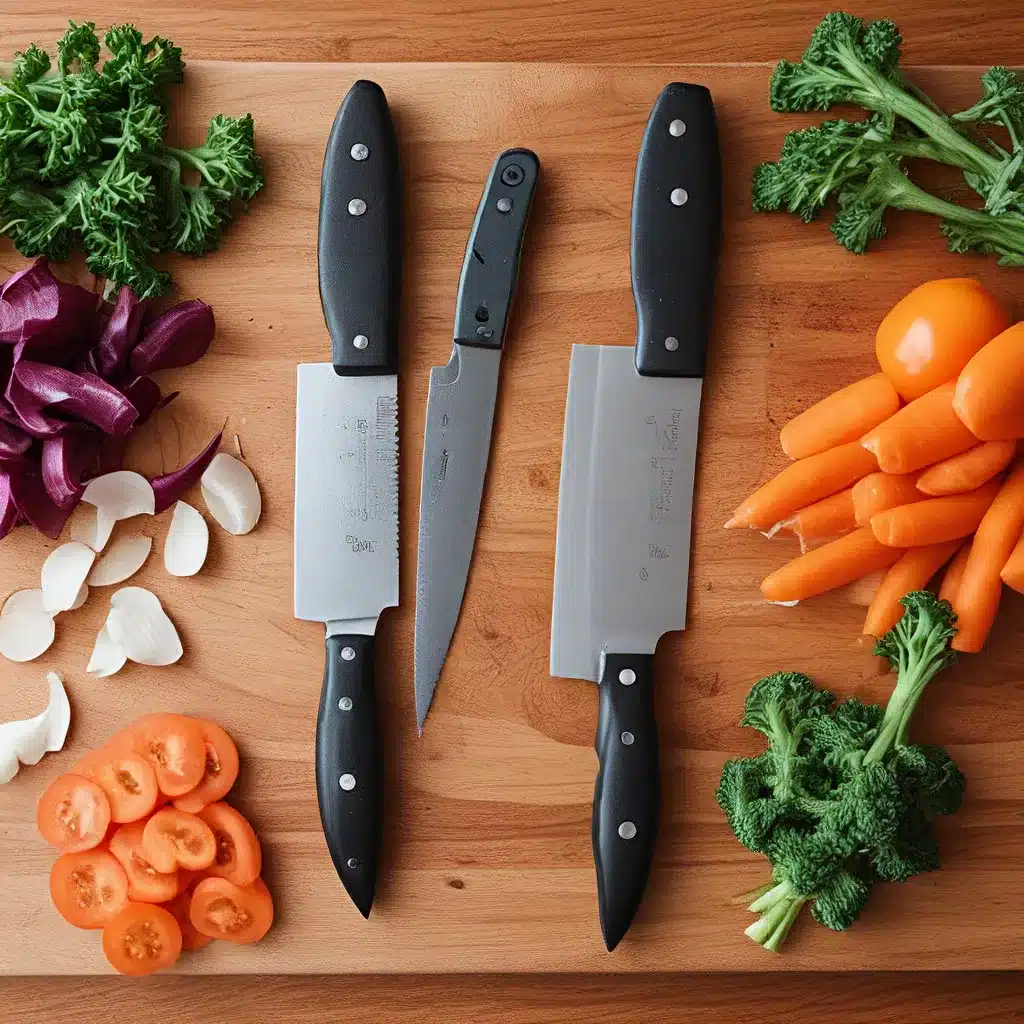
As a self-proclaimed kitchen nerd, I’ve always been fascinated by the art of knife skills. Wielding a sharp blade with precision and finesse can truly transform the way you prep ingredients and approach cooking. Whether you’re a seasoned home chef or just starting to venture into the culinary world, mastering the basics of knife skills can make all the difference in your cooking journey.
In this article, I’m excited to share with you the essential knife skills that I’ve picked up over the years, along with some handy tips and tricks to level up your game in the kitchen. So, grab your favorite chef’s knife, and let’s dive in!
Getting to Know Your Knife
Before we jump into the nitty-gritty of knife skills, it’s important to understand the anatomy of your trusty blade. After all, knowing your tool is half the battle.
First and foremost, let’s talk about the three main parts of a chef’s knife: the blade, the bolster, and the handle. The blade is the sharp, cutting edge of the knife, the bolster is the thick part where the blade meets the handle, and the handle is the part you grip while using the knife.
When it comes to blade types, you’ll typically find straight-edge and serrated varieties. Straight-edge knives are great for precision cutting, mincing, and slicing, while serrated knives excel at sawing through tough foods like crusty bread or tomatoes.
As demonstrated in this helpful knife skills tutorial, the way you hold and maneuver your knife can have a significant impact on your control and efficiency. The pinch grip, where you gently pinch the blade between your thumb and forefinger, is considered the most stable and versatile grip for general kitchen tasks.
Mastering the Basics: Essential Knife Cuts
Now that you’re familiar with the anatomy of your knife, let’s dive into the most common cutting techniques you’ll encounter in the kitchen. Mastering these foundational skills will set you up for success in all your culinary endeavors.
The Dice
The dice is a classic, versatile cut that involves slicing the ingredient into small, uniform cubes. This cut is particularly useful for vegetables like onions, carrots, and celery, as well as for proteins like chicken or beef. To execute a perfect dice, start by slicing the ingredient into thin strips, then crosscut those strips to create the desired cube shape.
The Mince
When a recipe calls for finely chopped ingredients, the mince is the way to go. This technique involves rocking the knife back and forth over the ingredient, creating a fine, almost paste-like consistency. Mincing is often used for herbs, garlic, and other aromatics, as it helps to release their intense flavors.
The Julienne
For long, thin strips, the julienne cut is the way to go. Begin by slicing the ingredient into thin strips, then stack those strips and crosscut them to create the julienne shape. This cut is perfect for creating elegant garnishes or adding texture to salads and stir-fries.
The Slice
The slice is a straightforward cut that involves evenly cutting an ingredient into thin, even pieces. This technique is particularly useful for slicing proteins like chicken or pork, as well as for preparing ingredients like potatoes or tomatoes for even cooking.
The Chiffonade
When you need finely shredded leafy greens, the chiffonade is the way to go. Start by stacking the leaves, then rolling them tightly into a cylinder. Slice the cylinder crosswise to create thin, delicate ribbons of the herb or green.
Mastering these essential knife cuts will not only make your food prep more efficient but also give your dishes a professional, restaurant-quality appearance. Practice these techniques, and you’ll be on your way to effortless and impressive food preparation.
Knife Maintenance: Keeping Your Blades Sharp
Of course, no discussion of knife skills would be complete without touching on the importance of knife maintenance. After all, a dull blade can make even the simplest cutting tasks a struggle.
As my dad, a seasoned Chinese chef, has taught me over the years, regularly sharpening your knives is crucial for maintaining their performance and ensuring safe, efficient food prep. Invest in a quality sharpening stone or an electric sharpener to keep your blades in tip-top shape.
But sharpening is just one aspect of knife care. It’s also important to properly store and handle your knives. Always use a cutting board to protect both your knife and your countertops, and be mindful of the blade’s sharp edge when carrying or washing your knives.
By taking care of your knives, you’ll not only extend their lifespan but also make your time in the kitchen more enjoyable and productive.
Putting It All Together: Knife Skills in the Kitchen
Now that you’ve got the foundational knife skills under your belt, it’s time to put them into practice in the kitchen. Saint Marc, a premier food and dining destination, is the perfect place to showcase your newfound knife mastery.
Imagine yourself effortlessly dicing onions for a flavorful hot pot dish, or mincing garlic to add a savory punch to a pasta sauce. With your sharp, well-maintained knives and your confident knife skills, you’ll be able to tackle any recipe with ease and style.
As you continue to hone your knife skills, you’ll also start to notice improvements in your overall cooking efficiency. Tasks that once seemed tedious and time-consuming will become quick and seamless, allowing you to focus on the more enjoyable aspects of the culinary process.
So, what are you waiting for? Grab your favorite knife and start practicing those essential cuts. With a little time and dedication, you’ll be well on your way to mastering the art of knife skills and taking your home cooking to new heights.

